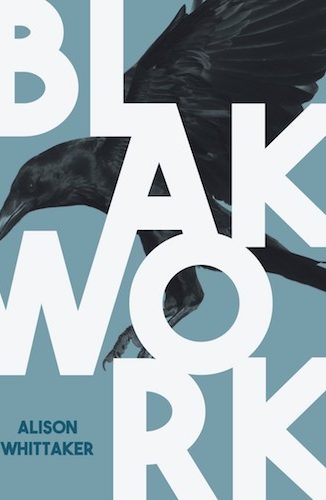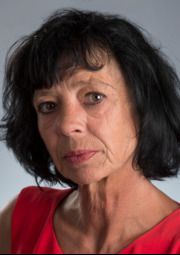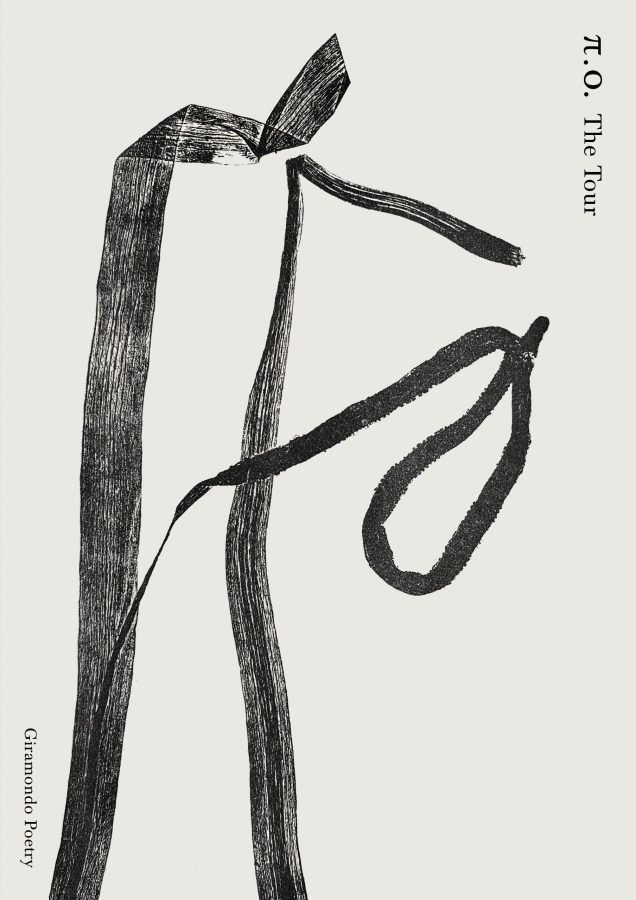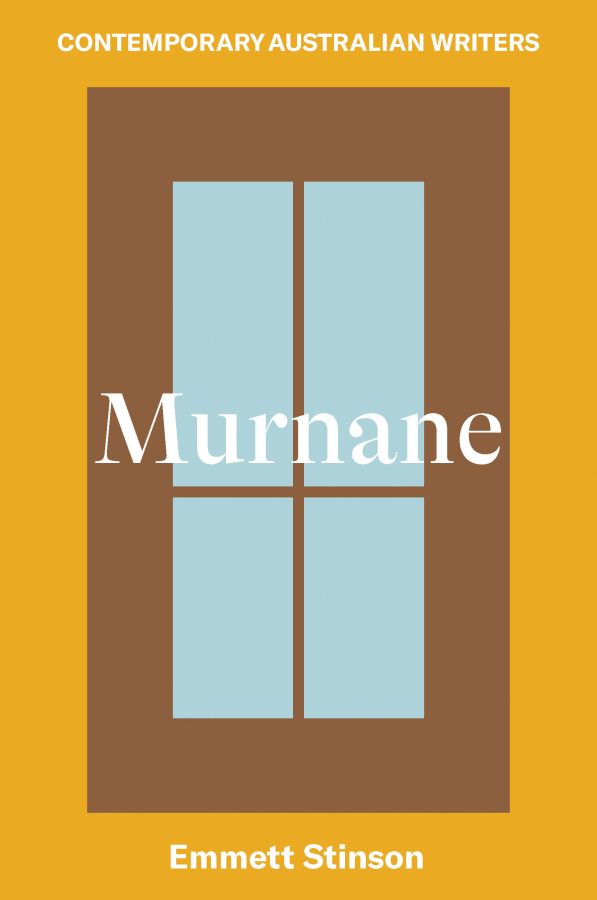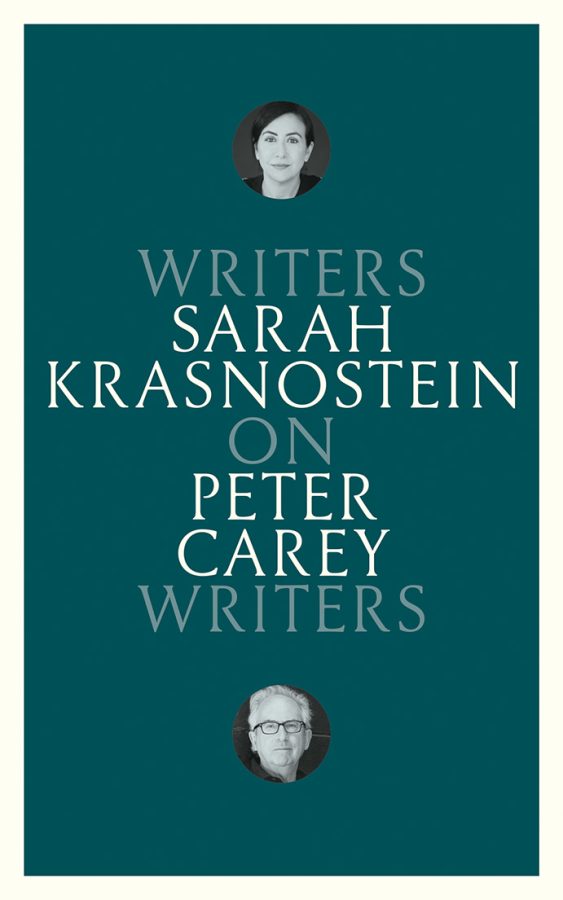BlakWork by Alison Whittaker is a unique hybrid of poetry, memoir, reportage, legal documentation, fiction, non-fiction, satire, and social commentary. But to label it – to assign it a genre among the vast array of western categories that exist, would I think, risk oversimplification. It is a work that defies both genre and gender categorisations and the restrictions imposed by colonialism to situate itself at the centre of many intersections; and it both embraces and interrogates these spaces from within. At the core of all these intersections is Whittaker’s Aboriginality – her Gomeroi Country and culture.
This is a dense work, with a diverse range of offerings spread across fifteen sections. Twelve of these end in the word ‘work’: white work, bloodwork, story work, heartwork, badwork, workwork, groundwork, selfwork, goodwork, sovwork, newwork, blakwork. Three out of fifteen parts form micro-story cycles: ‘the abattoir’, ‘the centre’ and ‘the school’ and, are prose pieces.
Written from a Gomeroi, queer perspective, BlakWork challenges the legacies of stolen land, systematic cultural genocide, forced removal of children, deaths in custody, persistent stereotypes about Aboriginal people and rural communities, and the ongoing ‘divide and rule’ trope of ‘discovery narratives’ by white Australia that contain Aboriginal peoples, our experiences, culture, her/histories and communities. And at the same time, Whittaker resists and speaks back to ongoing attacks and pernicious myths on Aboriginal queer communities.
Whittaker’s writing combines sharp and chilling social commentary on social justice, political issues, feminist themes, the erasure of Aboriginal peoples in settler history and policy, class, gender, corrupt prison systems, incarceration, patriarchy, love, sex, hate and white supremacy with anecdotes from her childhood and adolescence in rural Australia and in Sydney that are moving, humorous, riveting and always poignant. BlakWork also confronts the impact of hate crimes against LGBTIQ communities, lateral violence and trauma. For all this, Whittaker’s work is rooted in resilience and the power of words to expose, challenge, and, in some cases heal, the legacies of continuing colonialism and other forms of violence.
In 2016 Whittaker treated us to her first collection, Lemons in Chicken Wire. The manuscript for Lemons won Whittaker the 2015 Black&Write Indigenous Writing Mentorship at the State Library of Queensland, where she was mentored by Indigenous editors, themselves trained through the program. Lemons reflected on queer Aboriginal experiences in rural New South Wales in the form of a novella in verse. The chicken wire running through the work is a potent reminder of Aboriginal containment and confinement in the colonial nation.
In 2016, just after the publication of her first work, Whittaker told Star Observer; ‘I’ve always been a poet. I’ve always loved it.’ It shows. Her voice chants, croons, sasses and sings in the tradition of other Blak queer socially conscious poets such as Audre Lorde and Pat Parker. She went on to say; ‘I think the space that poetry leaves you means you don’t have to say everything and the reader can read into it.’
While concerned with many of the same themes as Lemons, BlakWork is also a departure in style from her earlier work, and marks a change of direction in Blak writing. The book represents a unique and diverse direction in Aboriginal literature. It is in this new work, I think, that she takes the freedom afforded by poetry beyond the known boundaries into an Ultima Thule of both Blak writing and white critique.
The first part of BlakWork is titled WhiteWork. The opening poem in this section is called ‘Blakwork’:
Fresh blakwork; industrial complexes
hands with
smooth and flat palm callouses.Soothing re –
– conciliation.
The stammering over the white buzzword of the century, ‘reconciliation’, and the wordplay, in which the word is broken into two syllables makes for a poignant irony. Separating the two syllables deconstructs the word, the practice and the philosophy behind Australian reconciliation. The Latin prefix ‘re’ literally means, ‘again and again’; and, ‘conciliation’, the action of stopping someone being angry; placation; the buzzword, the movement and the philosophy are laid bare as shallow, patronising discourse that spins around and around. It may be a ‘feel good’ for white Australia – a way for some to feel they have ‘come to terms’ with nation’s bloody past, but as Whittaker’s poem illustrates;
That dawdling off-trend meme,
white guilt. To survive among it, well,it’s naff to say, but compul –
– sory to do.
The Reconciliation movement does not address the day to day inequity of Aboriginal peoples, especially those out of sight of the big cities; and has very little positive impact, if any at all, on many Blak communities.
Such wordplay unifies BlakWork, and energises Whittaker’s laser-eyed commentary on the contradictions and schisms of settler colonial society’s continued attempts to manage and control Australia’s First Peoples. For example, beneviolence, is written entirely in capitals to replicate the shouting, officious tone of government paternalism expressed through policies, procedures and state-engineered interventions in to the daily lives of Aboriginal people, such as, the 2007 Northern Territory Intervention, the Close the Gap campaign, and, the Reconciliation movement and many more.
THIS IS GOOD FOR YOU!
THIS IS FOR YOUR GOOD. YOUR OWN
GOOD. THIS IS FOR YOU.
The whole poem is built of repetitions like this. These messages promise nothing and deliver nothing. They echo, all too uncomfortably, the shallow, hollow rhetoric of ‘Aboriginal management’, of paternalism and benevolence. Such interventions and policies are violent, cause violence and perpetuate violence, because they are veiled in the language of generosity.
Many poems in this collection make use of the space of the page, and play with word order, punctuation and many other conventions of usage. Two poems in the section sovwork are set out as what at first appears to be jumbles of words that are not laid out on the page in conventional left to right, line-by-line form. ‘Fieldwork’ is set out in the familiar form of a Find-a-Word grid. But most of the words, written lengthways across the wide-side of the page, are not English, or any other recognisable language:
Gatcctccat attacaacggt atctccacct caggttga don’t tctcaacaa ggaaccattg ccgacatgag actagttaggt mind
There is a hidden message that slices through the jargon of research fieldwork about the communities in which the data is collected, and not for the community itself.
Don’t mind me, just here to answer questions never asked. are you really an old culture? why are your sinuses so big? don’t ngara I’m just ngiilay with questions no answers but will build you keep you bularr
The inclusion of the Gamilaraay words make clear that this message is spoken by an Aboriginal speaker parodying a white researcher. ‘framework’, in the same section, is set on the page like a convoluted scaffolding. It’s a maze of buzzwords. How do you read it? What does it say? That’s the whole point. Other notable poems in this ilk are ‘Aboriginal land council’, ‘guesswork’, ‘teamwork’ and ‘ethnomathematics’.
Whittaker uses English as both an object of ridicule and a tool of empowerment. In subverting the conventional rules of usage, she makes it her own. In her hand, English does and says and tells a different story. Audre Lorde said that the master’s tools will never dismantle the master’s house. And they won’t. But Blak writers like Whittaker use these tools to carve out their own spaces to build other story – to re-story Country with the old stories, and to create new ones.
The poems in the Whitework section of the book read as a brutal critique of colonial society, and rewrite the male-dominated triumph narratives of discovery from a Blak queer perspective. ‘Not one silent lamb’ recasts the invasion of Botany Bay with the arrival of sheep and ‘terra nullius men’; ‘a love like Dorothea’s’ rewrites the (in)famous settler poem that scripts a pastoral tourist brochure of Australia in the early nineteenth century, without mention of a single blackfella;
I love a sunburnt country. I love a sunburnt country.
That is mine but not for me.
This section finishes with a poem called ‘Anthropocene’. It’s a brief and powerful poem that warrants quotation in full.
If I am roots
And you are the branches the
Trunk and the leaves thenI will suck no deeper for water
You leave here with me.
It’s a chilling poem that captures intergenerational inequity and the legacy of colonialism that continues to exploit natural resources, energy and water. Whittaker writes between the lines of MacKellar’s poem to lay bare white naivety and sentimentality as violence, massacre and dispossession of Aboriginal Countries.
Whittaker’s gifts as a satirist come to the fore in the suite of micro-stories in ‘the centre’. In the first piece, ‘futures. excellence.’ – two terms that are very familiar to Blackfellas due to the frequency with which they appear in government policy documents, programs and campaigns, the centre is:
For people so put out on the fringes, we blaks love the centre. And so, I suppose at some point in the twentieth century, we decided to build our own. Hundreds of them.
The tone mimics the paternalistic drone of government bureaucracies in their dealings with Aboriginal inequity, like a quick fix for social justice and equity. At the same time the words play on the settler trope of the centre/margins binary, which arrogantly assumes the ‘centre’ is where the whiteness is – concentrated in cities.
The National Centre for Indigenous Excellence is one such centre, built on ‘the suburb of Redfern on Gadigal land, and on the site of a former primary school now turfed to Indigenous services industry’. Inside the centre, the poet’s ‘jaw tilts to the sky’. While it is the centre’s ‘goal’ to have a ‘Aboriginal woman proud jawed, looking to the sky’, she admits that ‘it’s an earnest uncomfortable thing to do on dulce de leche afternoons, it burns my eyes and slows my feet’. Instead, she battles pedestrians on the way home before noticing the news, ‘bounced through a low-hanging satellite’, that the ‘Centre for Mob Futures is being rebuilt. Far from here out desert ways’. From a city metropolis, she ‘reported on its programmes quick to plug many hostile haemorrhages and rework its paper scaffolds’.
In ‘blak captcha’ and ‘virtualisation’, also in this suite, Whitaker confronts and exposes lateral violence within our communities that is part of the colonial divide and rule project. When the Centre for Mob Futures rejects her Confirmation of Aboriginality it,
…chewed up a perfectly good afternoon with an authentication yarn, something its blak-developed algorithm learned for itself, albeit imperfectly.
The legacy of colonial divide and rule is summed up in ‘virtualisation’ as the narrator describes themselves as ‘born of some cruel and overlapping coincidences that turned our spears around’.
It’s difficult for me to choose a favourite part, the bit I love most in this fine work. I deliberated, but, having grown up in rural Australia in the 1960s, for me, ‘the abattoir’ suite is sublime. Whittaker grew up in the northern rural New South Wales towns of Gunnedah and Tamworth. Whittaker of course grew up a lot later than me, but the grind of a country town life, the misinformed settler attitudes, shallow histories, the ongoing historically grounded racism still resonated, like thirty years was just yesterday. So too though, did the vibrancy and resilience of the Aboriginal community on whose Countries such towns imposed themselves; and the deep beauty and stories of place and people beneath and beyond the towns on its surface. And, the local meatworks – the abattoir, a standard feature of most rural towns; and a standard employer of unskilled workers, women, blackfellas and migrants.
‘The abattoir’ moves from poetry to the short, sharp, staccato prose of micro-story. In this mini-short-story cycle, we learn that:
This is a familiar scene of at least three generations. The sheep’s bone is chalk dry and creaks at Dad’s touch. With a tug of a cold and numbing hand the bones slick enclosure urges out.
Whittaker describes her family in this white killing factory as ‘wholesome harvesters of flesh crops’, ‘from oesophagus to anus – the body is scoured of any engine that would suggest a lived life and passed on.’ Beyond the immediate bloodiness, images such as these carry more gruesome and sinister connotations, of the frontier massacres that occurred across Australian soil to produce the livestock and impose a pastoral empire that now produces sheep that dispossessed Blak workers process for national profit.
We were hunters and gatherers and ecological strategists. Our old towns established by gubs to boil down tallow. Now, we gather backstrap. We hunt cheap supermarket cuts.
This powerful piece ends with Whittaker describing her generation as ‘devon daughters – first generation who have not killed to live in the new way or the old.’ Yet despite the perceived and persistent disconnection between the traditional and modern spouted in settler discourse, Whittaker reminds readers in the conclusion of the enduring and ongoing connection of Aboriginal families and kinship.
At school our family’s gift is tucked to us on our dissection day; a hot heart whose fat is not yet solid.
‘Pull at the strings, girls!’
We swear they beat beneath us.
Through this suite, Whittaker also paints a picture of settler colonial society. In ‘outskirts’, Tamworth is both, ‘a blooming outpost of microbursts and wind from its hills under the eastern wealthy suburbs.’ But on the other side of town, Abattoir Road, ‘abattoir workers make roughly seven hundred a week’ and ‘no bus goes out to the abattoir. It’s taboo and scale put it out of reach of any town infrastructure, and out of moral notice’.
In ‘killwork’ and ‘the vote’, rural hypocrisy, bigotry and racism are crystallised as Whittaker pillories ‘white conspiracy theorists who accuse halal slaughterhouses of lacking transparency or funding violence between humans’. She knows from experience that ‘they’ve never seen this means and opaque rural abattoir perched on the fence’ and that ‘One Nation voters eating lamb on Australia Day never seen her grandfather’s silhouette at sunrise; a security guard quietly coaxing its gates open and shut like a secret valve.’
The poem ‘Blakwork’ is empowered by smatterings of Gamilaraay language. Whittaker expresses some regret for her lack of fluency in her own language, but the poem is one that speaks to connection and continuance, not disconnection or disempowerment;
My youngest sister, Katie, a digital native if ever there was one, first spoke Gamilaraay, when she was in primary school…. I lazily watched on a chair under a vent.
Later, Whittaker finds herself ‘some hundred kilometres away with an app to get my punctuation right’. At the end of the poem the line ‘Baluwaabadhaay garay guwaala’ (Speak slowly, please), is repeated four times, with a variation introduced in the final line:
Baluuwaabadhaay garay guwala, sis.
The last time the phrase is used, it is not accompanied by an English translation underneath, as it is the first three times. In the absence of translation and the addition of the word ‘sis’, a term of endearment and connection among Aboriginal communities, I hear the Gamilaraay language, now spoken by the speaker, however slowly. Whittaker’s careful placing of the Gamilaraay words – her own words against English, increases rather than diminishes both the power and endurance of the words themselves; and her poetry.
Like other Aboriginal poets, such as Yankunytjatjara/Kokatha writer Ali Cobby Eckermann and Wajarra/Badimaya/Nhanagard Charmaine Papertalk-Green reclaiming and using language in writing, its use in Whittaker’s works reclaims and celebrates something new, rather than laments something that until very recently whitefellas described as ‘gone or lost culture’. It reclaims that which is ancient and continuing to herald a new future for Aboriginal writing.
Whitttaker is not the only Aboriginal writer to combine her work and studies as a legal scholar with creative writing. Eualaya/Kamillroi novelist, literary critic and film-maker and legal academic Larissa Behrendt, Birri-Gubba crime fiction writer, Nicole Watson and Palyku children’s and young adult fiction writer and illustrator, Amberlin Kwaymulina have all produced critically acclaimed literary works. Many of Whittaker’s poems make direct use of legal proceedings and reportage to cut through the legal fiction of the Australian colonial ‘justice’ system’s treatment of and attitudes towards Aboriginal people.
The opening lines of ‘skeleton of common law’, in which she cites the ‘forty-nine most common three-word phrases in the Mabo decision’. And the chilling, ‘exhibit tab’, which cites the ‘forty-nine most common three-word phases in Western Australia Coroner’s findings into the death of Ms Dhu’. In this piece though, some of the words are deliberately obscured by black boxes to give the visual effect of words crossed out – omitted from the report. This piece ends with a juxtaposition of truth over the legal fiction that continues to justify Aboriginal deaths in custody:
Ought to have
Western Australian police
Class Constable George
Through his counselWas feigning her
Lock up procedures.
Whitaker also joins a growing number of Aboriginal women poets, most notably Ngrungga poet and academic Natalie Harkin, who use poetry to critique and expose the duality of government documents, archival reports, files, letters, media reportage that intervene and affect almost all facets of Aboriginal life. For example, ‘palimpsest’ quotes the exact text of a plaque erected as a memorial to an Aboriginal warrior, Cumbo Gennerah. Above the quote, the sits the real story, of Aboriginal massacre, erasure, appropriation and commercialisation of Aboriginal history and culture as ‘times past’;
From Red Kangaroo, to Red Chief.
to tourist information centre attraction
Whitttaker makes no apologies for making the reader work hard. In concrete and vertical poems, shape poems and emoji poems, such as ‘scissors anchor pistol’, ‘line up’, ‘housemade’ and ‘trope’, the reader must decipher complex, contradictory, convoluted messages. These poems are literary simulations of the daily lives of many Aboriginal communities caught in webs of bureaucratic government-speak.
Rejecting western binaries such as old/new, modern/ancient, urban/traditional, male/female, rural/metropolis, centre/margin that confine and contain Aboriginal experience is a central concern of Whittaker’s work. Such binaries and schisms underpin damaging and enduring settler discourses of Aboriginal authenticity, defined according to western oppositional categories. These discourses pervade every aspect of Aboriginal life. Take for an example the pernicious, ever-present myth of the fair-skinned, urban, queer, educated professional blackfella as assimilated. Very few of us when impounded by such binaries pass the ‘black-white-imposed’ litmus test of authenticity.
Whittaker exposes the legacy such discourses can have on Aboriginal life with moving humour in ‘the school’. In the micro-story, ‘not a lake’, she describes an incident where as a high-school student during a Baptist camp an artificial lake:
I dipped my hand near the algae-shore and smeared my face like I saw in books.
A fellow Aboriginal student, described as an atheist, calls her a ‘fucking idiot’ and buckets her fringe and face with water to wash the mud it off, berating her that what she thought was ochre was really ‘pelican shit!’. The piece ends in a retrospective recount of the incident where she describes herself and her friend as ‘young and colonially bound’ and that:
All the same, I felt shame. So, by shame, I was cleansed.
As a black reader, I read the humour in the irony of being cleansed by pelican shit. But I also read the shame that most Aboriginal people experience at some point, of trying to justify our existence and appearance as fair-skinned, or urban, or educated, or queer, or, all of the above.
Whittaker’s writing moves beyond this to foreground the continuing cyclic nature of Aboriginal time and the ongoing dialogue between past and present. In doing so she exposes the enduring discovery narratives that came with the invasion and have persisted ever since. One clear example of this is the arrogance of white Australia in seeing queerness as white by design, and queerness in Aboriginal people as a sign of assimilation. This logic assumes that sexuality and gender are tied to technological and cultural developments that Aboriginal people don’t have.
Whittaker’s book resonates transnationally with the works of queer, socially conscious Indigenous and Black writers in North America, such as that of Menominee poet and activist Chrystos, in particular their 1998 collection Urban Survivor Stories: The Poetry of Chrystos;
Black American writers Pat Parker and Audre Lorde; and Cherokee writer and activist, Qwo-li Driskill. In particular, Driskoll’s 2016 work Asegi Stories; Cherokee Queer and Two-Spirit Memory, paints a picture of Two-Spirited persons going back to Cherokee history to better understand the way First Nations Americans viewed gender and sex before colonisation. In Cherokee, the term asegi refers to those who fall outside of men’s and women’s roles, or who mix both men’s and women’s roles. Cherokee and other North American Indigenous peoples did not identify gender on the binary that exists in western cultures as woman or man. Two-Spirit is a contemporary term used in North American Indigenous communities to describe someone whose gender exists outside the colonial logic and Indigenous traditions for people who don’t conform to rigid gender categories.
Like Driskoll, Whittaker throws the limits and shallowness of such binaries and socially constructed containment, and, absurd claims to have invented queerness back in the face of white Australia and exposes them, and other persistent assumptions as another cog in the wheel that turns the colonial mythscape of settler Australia. Whittaker nails the confinement of settler colonialism for Aboriginal peoples in ‘The History of Sexuality Volume III’:
How can two blak women love each other?
Get outside’o that white projection
with Panopticon projecting it all?
The final section of the book is ‘Blakwork’. The very last poem, ‘gasp’, written in the form of a repetition of four words – work, gasp, pack and run – ends like this:
gasp
gasp
work
This is not a glossy book nor is it one without hope, humour or resilience. It is Aboriginal realism at its best. This is a collection that works hard and achieves many things. Whittaker’s work has added new approaches to language; and new language to queer writing studies conversations; and, through drawing always on her Gomeroi her/history and culture, she cuts through the colonial lens to expose such interventions, that have for too long been imposed on other cultures, especially Indigenous peoples, to reclaim Aboriginality and gender identity from colonial confinement. Welcome to Ultima Thule!
